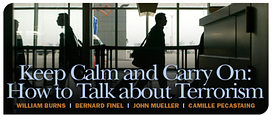On most issues, I think the gap between my perspective and Dr. Burns’ is quite small. I don’t think that policy success directly translates into changes in public perceptions. And I agree with his conclusion, “Take-away lesson: To be effective, reducing risk must be accompanied by identifying gaps in public understanding.” Where I am more skeptical is about the role of an explicit communication strategy in bringing about the changes we seek.
Aside from the problem of cutting through the noise that I mentioned earlier, I just don’t think there is any good evidence that nuanced discourse affects perceptions. Indeed, virtually every public policy debate in the United States tends to resolve itself down a set of unsophisticated sound-bites that gain traction through their appeal to broader, inchoate beliefs and norms. We don’t debate the actual merits of policy options. What we debate is whether a proposal looks vaguely like something we like or hate. The public tends to lodge policy debates into quite broad boxes… much to the frustration of policy wonks. But it is what it is.
And frankly, there is nothing really wrong with that. Communication with the public always has theatrical elements. It is often about images and symbols more than about details. Which is why, ultimately, I think that any public reassurance strategy will inevitably gravitate away from the sophisticated discourse envisaged by Dr. Burns and toward the blunt “security theater” approaches that we’ve already seen.
There is also another issue I’d like to raise: national culture. This is a slippery concept and I introduce it with some trepidation. But I can’t help but think it is relevant. Consider Britain, where as a matter of national culture there exists the concept of the “stiff upper lip” in response to threats. Whereas in the United States we value the use of decisive violence to eliminate threats once and for all. These broad orientations don’t define policy choices, but I do think that appeals to calm reflection on risks gain more traction in Britain than in the United States, where we don’t like to see problems fester but rather prefer to “solve” them. It may be that some of the approaches successfully implemented elsewhere just won’t work in the United States because they are contrary to our national expectations of decisive leadership.

